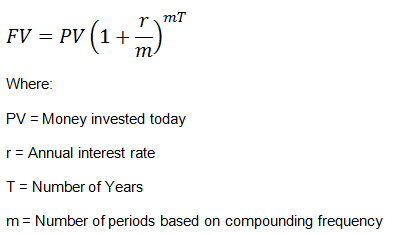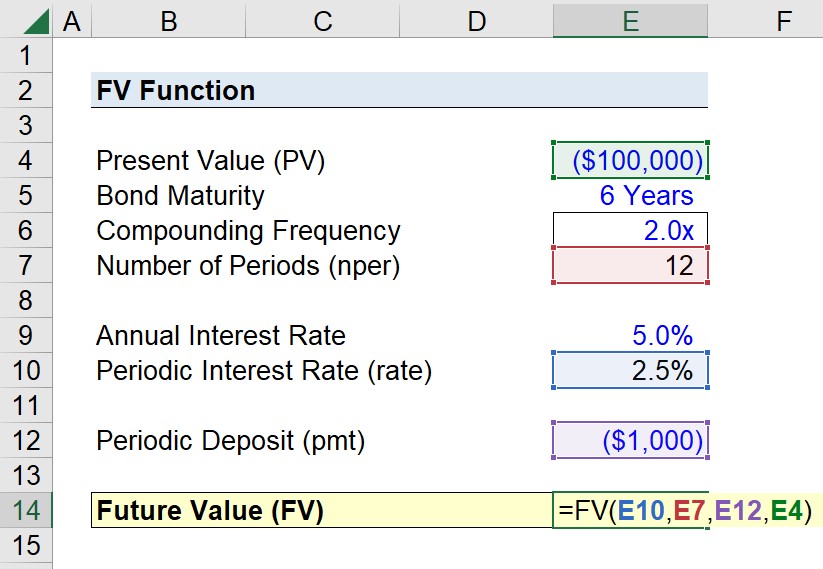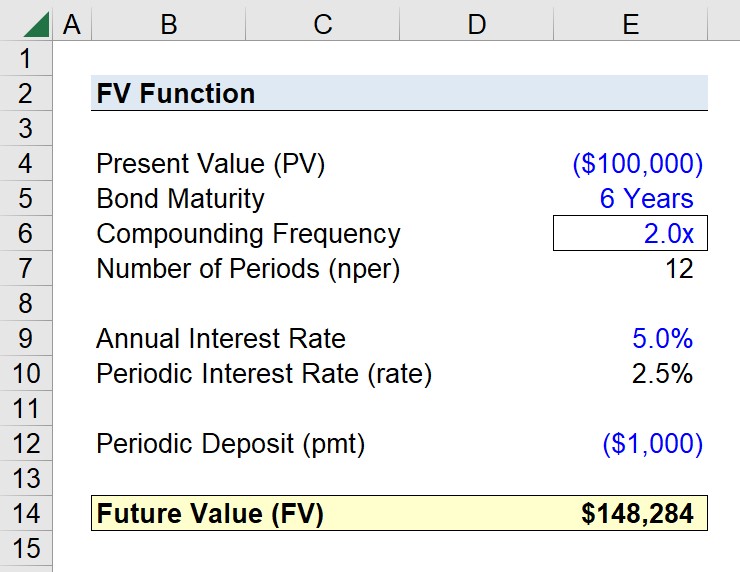7장: 저축과 비상 자금
수업 학습 목표:
소개: Understanding various financial products and the importance of saving is crucial in personal finance management. This chapter delves into different types of bank accounts, the significance of emergency funds, and how inflation and interest rates affect savings. Additionally, it covers the basics of financial institutions and how to effectively manage and grow personal finances.
- Understand Types of Accounts: 에 대한 학습 checking accounts, savings accounts,
money market accounts, 그리고 certificates of deposit (CDs). Each account type serves different financial needs, offering varying access to funds and interest rates. - Build an Emergency Fund: Recognize the importance of having an emergency fund to
cover unexpected expenses. Understand how to calculate the appropriate amount needed and strategies for building this fund. - Impact of Inflation and Interest Rates: 어떻게하는지 배우다 인플레이션 그리고 이자율 affect savings. Understanding these factors helps in making informed decisions about saving and
investing. - Financial Institutions and Services: Understand the differences between credit unions 그리고
commercial banks and how to choose the right financial institution for your needs.

수치: The infographic is a guide on “Building an Emergency Fund,” which it defines as a reserve of cash sufficient to cover six months’ worth of living expenses. It breaks down various monthly expenses such as housing, car, debt, phone, utilities, internet, groceries, and insurance, totaling $4,100. To calculate the size of an emergency fund, it advises multiplying this monthly total by six, resulting in $24,600. This visual serves as a practical tool for individuals to estimate the amount they need to save to be financially secure in case of unexpected events. For practical use, users should tally their own monthly expenses, follow the provided formula to determine their emergency fund target, and then create a savings plan to build up to that amount over time.
출처: 맞춤형 인포그래픽
Introduction to Saving and Financial Products
Understanding various financial products and the importance of saving is crucial in personal finance management. This chapter delves into different types of bank accounts, the significance of emergency funds, and how inflation and interest rates affect savings. Additionally, it covers the basics of financial institutions and how to effectively manage and grow personal finances.
Types of Accounts and Financial Services
Financial Institutions offer a range of accounts and services, each designed for specific financial needs:
- Checking Accounts: Used for daily transactions. They usually come with a debit card and offer unlimited deposits and withdrawals.
- Advantages: Easy access to funds, debit card access, online bill pay.
- Disadvantages: Typically low or no interest earned.
- 저축 계좌: Aimed at short-term savings over time. Offer interest on the stored funds.
- Advantages: Earn interest, low risk.
- Disadvantages: Limited withdrawals, potentially lower interest rates compared to other savings products.
- Money Market Accounts (MMAs): A blend of checking and savings accounts, usually with higher interest rates and higher minimum balance requirements.
- Advantages: Higher interest rates, check-writing privileges.
- Disadvantages: High minimum balance requirements, limited transactions.
- Certificates of Deposit (CDs): Fixed-term savings account with a guaranteed interest rate.
- Advantages: Higher interest rates compared to savings accounts, fixed returns.
- Disadvantages: Penalties for early withdrawal, money is inaccessible until the term ends.
Opening and Managing an Account: Opening a bank account typically requires providing personal identification, Social Security Number, and an initial deposit. Managing an account involves monitoring balances, making deposits and withdrawals, and understanding fees like minimum balance requirements and overdraft charges.
Account Components: An account number uniquely identifies your account, while the routing number identifies your bank — crucial for direct deposits and setting up automatic payments.
Credit Unions vs. Commercial Banks: Credit unions typically offer lower fees and better interest rates but might have fewer branches and services. Commercial banks offer a broader range of services but may charge higher fees.
Evaluating Financial Products for Students
Students should consider checking and savings accounts with low fees, easy access to funds, and educational resources to help manage their finances. 장점 include learning money management and earning interest on savings. Disadvantages may involve managing minimum balance requirements or navigating potential fees.
Online Banking and Account Management
Online Banking provides convenient access to financial services, including account opening, balance checking, and fund transfers. Key components include understanding minimum balance requirements, monthly fees, overdraft penalties, and interest rates. It’s essential to track and manage funds regularly to ensure accounts cover transactions and avoid fees.
Interest Rates and Savings
When demand for loans increases, banks may offer higher interest rates on deposits to attract more savers, providing them with the funds to lend out. Conversely, in a saturated loan market or economic downturn, the demand for borrowing decreases, and banks may lower interest rates on savings accounts.
Mobile Payment Accounts vs. Traditional Banking
Mobile Payment Accounts offer convenience and ease of use but typically lack interest earnings, reducing the potential for savings growth compared to traditional 저축 계좌, which offer interest. Cryptocurrency Accounts offer high volatility and potential returns but lack federal insurance, contrasting with the safety and steady growth potential of federally insured savings accounts.
Impact of Spending vs. Saving
Choosing between spending immediately and saving for the future is a common dilemma. Immediate gratification can lead to regret if it prevents achieving more significant financial goals, such as purchasing a home or securing a comfortable retirement.
Scenario 1: Emily decides to buy a high-end laptop on impulse, drawn by its advanced features. Months later, she regrets not saving that money for a professional certification that could have advanced her career, highlighting the importance of prioritizing long-term financial goals over immediate gratification.
Scenario 2: After receiving a bonus, Jake immediately books an expensive vacation. While enjoyable, he later wishes he had saved part of the money for an emergency fund when his car needed unexpected repairs, emphasizing the balance between enjoying the present and preparing for the future.
Inflation and Interest Rates

Figure title: The Impact of Inflation on the Dollar’s Value Over Time
원천: 인베스토피디아
설명: The infographic likely illustrates how inflation erodes the purchasing power of the dollar over time, showing that a fixed amount of money will buy fewer goods and services in the future compared to today. It may use visual elements like graphs or charts to compare the value of a dollar at different points in time, underlining the concept of “time value of money.” The visual representation helps viewers understand that as inflation increases, the real value of money decreases.
주요 시사점:
- Inflation reduces the purchasing power of money, meaning what you can buy with a dollar today may not be the same tomorrow.
- The time value of money is a crucial concept in finance, emphasizing that a dollar today is worth more than a dollar in the future due to inflation.
- Understanding inflation is essential for financial planning and investment strategies to protect against the loss of money’s value over time.
애플리케이션: This information is vital for investors and individuals planning their finances. By understanding the impact of inflation, users can make informed decisions about saving, investing, and spending. Investments that have the potential to outpace inflation, such as stocks or inflation-protected securities, can help preserve the purchasing power of capital over time. This knowledge encourages proactive financial planning to ensure long-term financial security and growth.
Inflation diminishes the value of money over time, reducing the purchasing power of savings. The nominal interest rate doesn’t account for inflation, while the real interest rate (nominal rate minus inflation rate) indicates the actual growth of savings. Savers should seek a nominal rate that outpaces inflation to preserve their savings’ value.
Interest rate= nominal interest – rate of inflation
예: If the nominal interest rate on a savings account is 3% and the inflation rate is 2%, the real interest rate is effectively 1%. Over one year, the purchasing power of the money in this account grows by only 1% when adjusted for inflation, underscoring the importance of seeking savings or investment options that outpace inflation to genuinely grow wealth over time.
Inflation Protection and I Bonds
Bonds are designed to protect against inflation, as their interest rates adjust with inflation. When inflation rises, the interest rate on Bonds increases, ensuring that the savings maintain their purchasing power over time, unlike traditional CDs, where fixed interest rates might result in negative real returns in high inflation environments.
Future Value and Discounting

Figure title: Calculating the Future Value of a Single Cash Flow
원천: Finance Train
설명: The infographic likely demonstrates the formula for calculating the future value of a single cash flow, which is a fundamental concept in finance. This formula helps in understanding how much an investment made today will grow to at a future date, considering a specific rate of interest. The formula is typically represented as FV = PV(1 + r)^n, where FV is the future value, PV is the present value, r is the interest rate, and n is the number of periods.
주요 시사점:
- The future value (FV) formula is crucial for calculating how investments grow over time.
- Understanding this formula allows investors to estimate the worth of investments in the future.
- The variables in the formula include the present value (PV), interest rate (r), and number of periods (n), each playing a critical role in the calculation.
애플리케이션: This concept is essential for anyone involved in financial planning, investment analysis, or saving for future goals. By applying this formula, individuals can make informed decisions about their investments, understanding how different rates of interest and time periods affect the growth of their money. It encourages strategic investment and helps in setting realistic expectations for investment returns, which is fundamental for long-term financial planning and wealth accumulation.
Using a spreadsheet, we calculate that a 10-year-old needs to save $200 a month at a 5% annual interest rate to afford one year of college tuition, estimated at $20,000 eight years from now. This example illustrates discounting the future value of money, accounting for interest to determine how much needs to be saved today to meet future financial goals.


Figure title: Using the FV Function in Excel to Calculate Future Value
원천: Wall Street Prep
설명: The infographic likely demonstrates how to use the FV function in Excel to calculate the future value of an investment, considering a constant interest rate over a number of periods. The FV function is a powerful tool in Excel for financial analysis, allowing users to input variables such as rate, number of periods, payments, present value, and type (whether payments are made at the beginning or end of periods) to compute the future value of an investment.
주요 시사점:
- The FV function in Excel is essential for calculating the future value of investments.
- Key inputs for the FV function include interest rate, number of periods, periodic payments, present value, and payment timing.
- Understanding how to use the FV function can significantly enhance financial modeling and investment analysis skills.
애플리케이션: This knowledge is crucial for finance students, financial analysts, and anyone involved in investment planning or analysis. By mastering the FV function, users can quickly assess the potential future value of investments, aiding in decision-making processes. It’s particularly useful for evaluating the growth of savings accounts, retirement funds, or any investment over time, providing a clear picture of financial futures.
Down Payments and Loans
Making a down payment on a loan, like a 20% down payment on a home, reduces the total amount borrowed, leading to lower monthly payments and often better interest rates. This makes the borrower more attractive to lenders and can significantly reduce the cost of the loan over time.
Emergency Funds and Financial Planning

그림 제목: 개인 재무 계획의 6단계 프로세스
원천: 아웃룩 머니
설명:
이 이미지는 개인 재무 계획을 위한 6단계 프로세스를 소개합니다. 이는 자산과 부채를 포함한 현재 재무 상황을 평가하는 것부터 시작하여 재무 목표 설정, 실행 계획 수립, 투자 옵션 평가, 계획 실행, 정기적인 전략 검토 및 수정을 통해 진행됩니다.
주요 내용:
- 현재 재정 평가 is crucial as a starting point for planning
- 목표 설정 involves assigning value and timelines to short, medium, and long-term financial aspirations
- 안 행동 계획 must consider one’s risk tolerance and align investment choices accordingly
- 투자 옵션 구체적인 목표와 연계되어야 하며 세금 효율성과 적합성을 기준으로 선택되어야 합니다.
- 정기투자 습관형성과 재무목표의 원활한 달성에 기여합니다.
정기 검토 투자가 제대로 진행되고 있는지 확인하고 필요에 따라 조정을 허용합니다.
애플리케이션:
현재 재정 상황에 대한 평가부터 시작하는 것이 개인 재정 계획의 기초입니다. 재정적으로 현재 위치를 이해함으로써 현실적인 목표를 설정하고, 개선 영역을 식별하고, 재정적 안정과 성장을 달성하기 위한 로드맵을 만들 수 있습니다. 이 단계를 통해 후속 계획은 현실에 근거하고 개인의 고유한 재정 상황에 맞게 조정됩니다.
An Emergency Fund is critical for financial stability, providing a safety net for unexpected expenses. Creating and maintaining a budget that includes allocations for short-term and long-term savings ensures preparedness for life’s uncertainties and progress towards financial goals.
예: Maria’s car breaks down, requiring expensive repairs. She revises her budget to reduce discretionary spending and reallocate funds from her entertainment and dining out categories to cover the repair costs, while temporarily reducing contributions to her savings account.
Understanding Pay and Deductions
총 급여 is an employee’s total earnings before any deductions. 순수익, or take-home pay, is what remains after taxes, healthcare, and other deductions. Understanding the difference is essential for accurate budgeting.
Financial Institutions and Services
Financial Institutions, including banks, credit unions, and online platforms, offer various products like checking and savings accounts and financial planning services. Choosing the right institution and services is vital for effective money management and achieving financial goals.
Example of Account Management:
To manage a checking account effectively, regularly review transactions and reconcile with personal records to ensure accuracy. Utilizing mobile banking apps can simplify tracking and help avoid overdraft fees.
결론:
Understanding and utilizing different financial accounts and services, managing savings versus spending decisions, and planning for the future with emergency funds are foundational elements of sound financial health. Recognizing the impact of external factors like inflation and staying informed about the roles of various financial institutions empowers individuals to make decisions that align with their financial goals and needs.
주요 수업 정보:
마무리 진술: Understanding and utilizing different financial accounts and services, managing
savings versus spending decisions, and planning for the future with emergency funds are foundational
elements of sound financial health. Recognizing the impact of external factors like inflation and staying
informed about the roles of various financial institutions empowers individuals to make decisions that
align with their financial goals and needs.
1. Types of Accounts: Different financial accounts serve various purposes. Checking accounts
are for daily transactions with easy access to funds. Savings accounts offer interest on stored funds for short-term savings. Money market accounts (MMAs) provide higher interest rates
with check-writing privileges. Certificates of deposit (CDs) offer fixed-term savings with
higher interest rates but penalize early withdrawal.
2. Building an Emergency Fund: An emergency fund should cover six months of living expenses, providing a financial safety net for unexpected events. To calculate the required
amount, total monthly expenses and multiply by six. Start by setting small savings goals and
gradually increase the amount saved.
3. Impact of Inflation and Interest Rates: Inflation reduces the purchasing power of money over time, making it essential to seek savings or investment options that outpace inflation. The
real interest rate (nominal interest rate minus inflation rate) reflects the actual growth of savings. For example, if the nominal interest rate is 3% and inflation is 2%, the real interest rate is 1%.
4. Financial Institutions and Services: Credit unions often offer lower fees and better interest rates compared to commercial banks but may have fewer branches and services. Evaluate financial products for low fees, easy access to funds, and additional services like financial
education.

